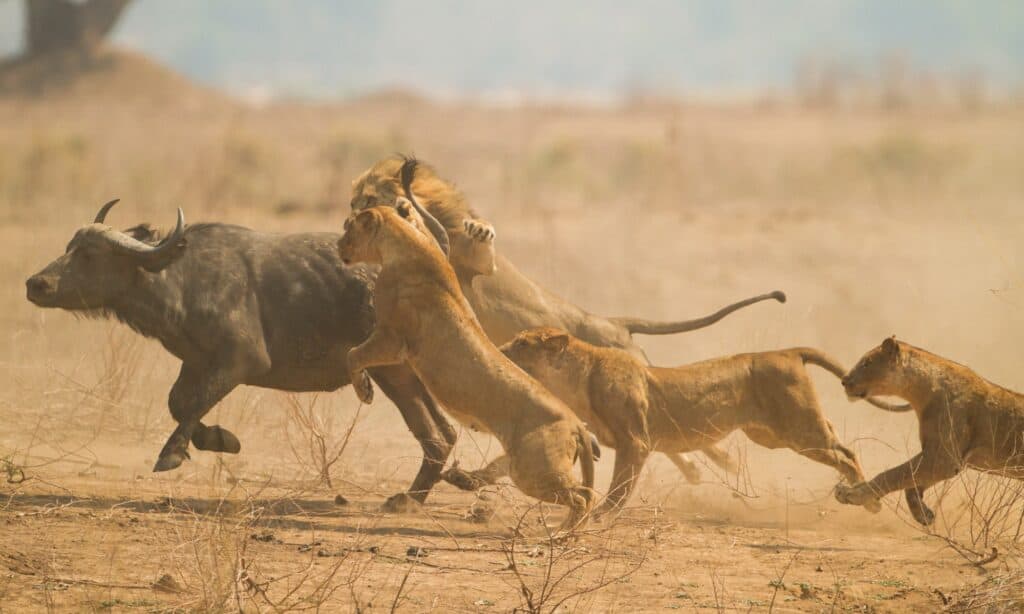Continue reading for our analysis...

It’s easy to see why vultures gather around the site of lion kills. Lions do not eat the entire carcass, and vultures can pick off the parts that lions reject. However, as we see in this clip, vultures are also taking a risk by hanging around near feeding lions. This particular lion has decided that it is going to have a vulture for dessert! With remarkable agility, it leaps into the air and snatches the bird in both paws just as it has taken off.
Do Lions Normally Eat Birds?
Lions eat a wide range of prey, and that includes birds! They commonly eat vultures as well as secretary birds and ostriches. Lions also eat ostrich eggs. Even though you usually associate lions with hunting larger animals, they often supplement their more significant kills with smaller prey. Lions can be seen eating fish and reptiles, including tortoises and crocodiles. They also eat termites, and if they get the opportunity, they will hunt domestic livestock.
It’s not only vultures that feed on prey caught by other animals. Some lion pride frequently scavenge, providing up to half their nutrition. They are happy to steal kills from other predators, including cheetahs, spotted hyenas, African wild dogs, and leopards. They are even willing to take prey from other lions.
One of the ways lions locate kills made by other predators is by watching where vultures descend. Perhaps this is what the lion in this clip did, simultaneously bagging itself a side order of vulture.
How Agile Are Lions?

Lions use their power and agility when hunting.
©iStock.com/jez_bennett
Lions are very agile predators. They walk at around two mph when not in a hurry. However, they can break into sudden bursts of speed when attacking prey. This cannot be maintained for long distances – they prefer sprints to marathons. Lions can reach a top speed of around 37 mph.
While these big cats are not known for their tree-climbing abilities, some have been seen resting in the lower branches of trees. Their bodies are not designed for scaling the higher limbs in the same way as a leopard, for example. Therefore, if a leopard wants to escape a lion, climbing to the top of a tree is a good option. Lions are also not keen on swimming but have been seen doing it if they have to. Lions sometimes get into the water to cool down in hot weather. They will also hunt prey that has retreated into rivers, mistakenly thinking this will keep them safe from the big cat!
Thank you for reading! Have some feedback for us? Contact the AZ Animals editorial team.







